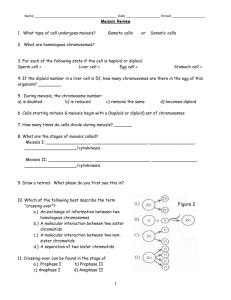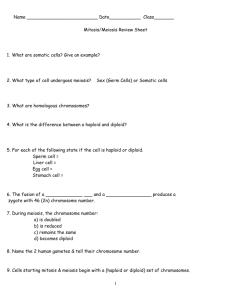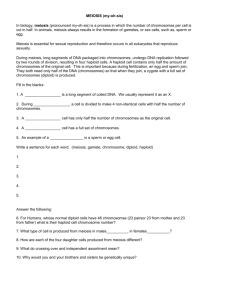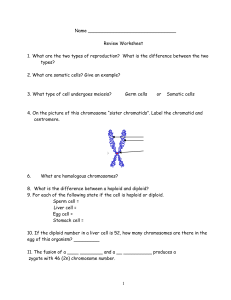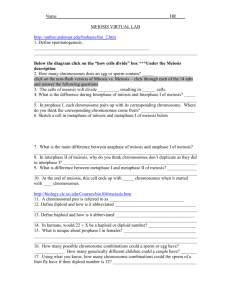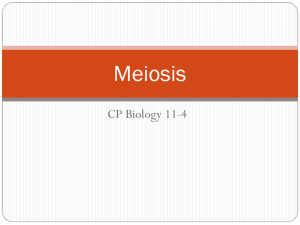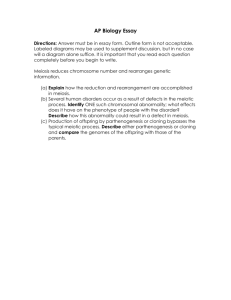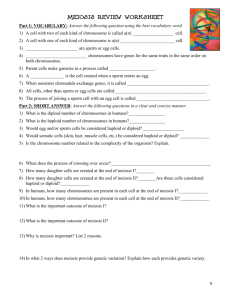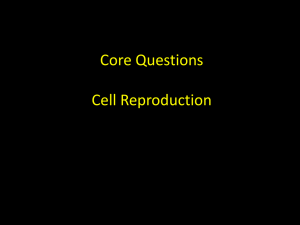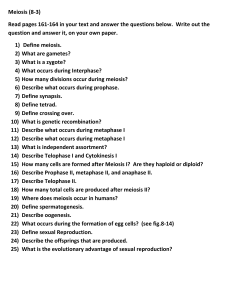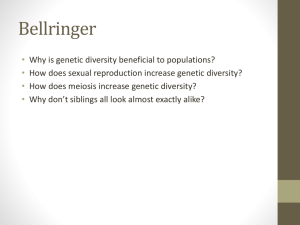Meiose Übungsarbeitsblatt: Zellteilung & Genetik
advertisement
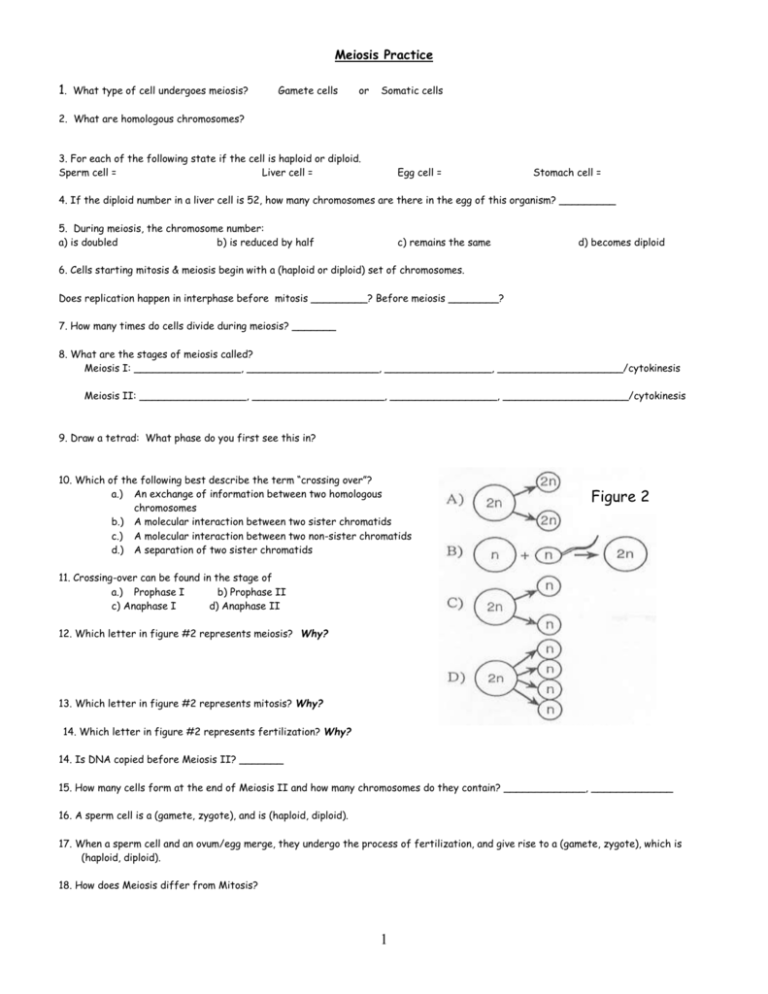
Meiosis Practice 1. What type of cell undergoes meiosis? Gamete cells or Somatic cells 2. What are homologous chromosomes? 3. For each of the following state if the cell is haploid or diploid. Sperm cell = Liver cell = Egg cell = Stomach cell = 4. If the diploid number in a liver cell is 52, how many chromosomes are there in the egg of this organism? _________ 5. During meiosis, the chromosome number: a) is doubled b) is reduced by half c) remains the same d) becomes diploid 6. Cells starting mitosis & meiosis begin with a (haploid or diploid) set of chromosomes. Does replication happen in interphase before mitosis _________? Before meiosis ________? 7. How many times do cells divide during meiosis? _______ 8. What are the stages of meiosis called? Meiosis I: _________________, _____________________, _________________, ____________________/cytokinesis Meiosis II: _________________, _____________________, _________________, ____________________/cytokinesis 9. Draw a tetrad: What phase do you first see this in? 10. Which of the following best describe the term “crossing over”? a.) An exchange of information between two homologous chromosomes b.) A molecular interaction between two sister chromatids c.) A molecular interaction between two non-sister chromatids d.) A separation of two sister chromatids Figure 2 11. Crossing-over can be found in the stage of a.) Prophase I b) Prophase II c) Anaphase I d) Anaphase II 12. Which letter in figure #2 represents meiosis? Why? 13. Which letter in figure #2 represents mitosis? Why? 14. Which letter in figure #2 represents fertilization? Why? 14. Is DNA copied before Meiosis II? _______ 15. How many cells form at the end of Meiosis II and how many chromosomes do they contain? _____________, _____________ 16. A sperm cell is a (gamete, zygote), and is (haploid, diploid). 17. When a sperm cell and an ovum/egg merge, they undergo the process of fertilization, and give rise to a (gamete, zygote), which is (haploid, diploid). 18. How does Meiosis differ from Mitosis? 1 2
